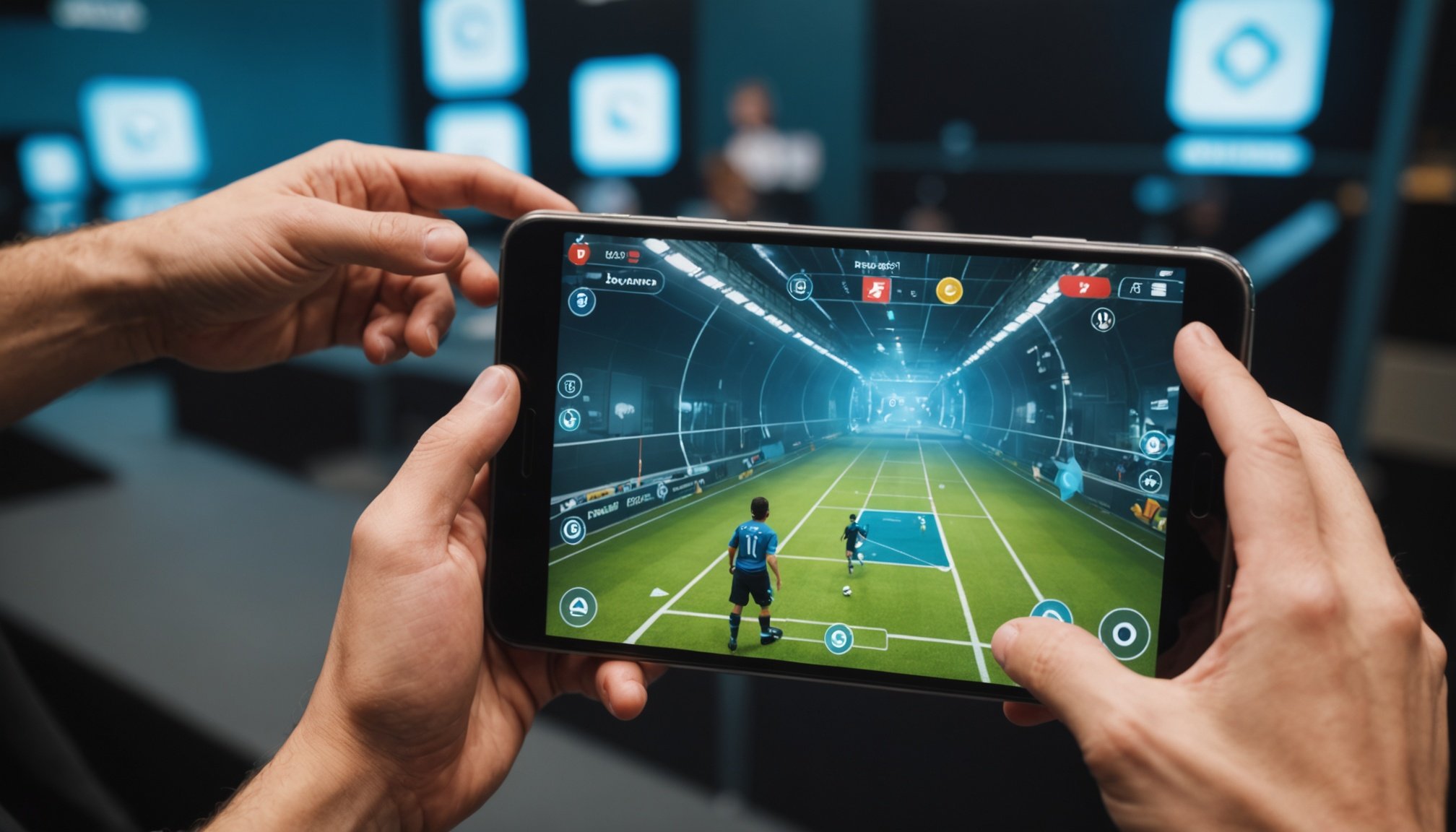Overview of Haptic Feedback Technology
Haptic feedback technology, also known as tactile feedback, plays a crucial role in mobile gaming by providing users with a sense of touch and interaction. This technology uses vibrations or motions to simulate real-world touch sensations, enhancing the immersive experience. In games, haptic feedback allows players to feel actions, such as the recoil of a gun or the rumble of a car engine. This not only increases the realism but also helps in creating an engaging gaming environment.
In the realm of mobile augmented reality, haptic feedback is an innovative addition that amplifies user immersion. As mobile devices evolve, they’re integrating more sophisticated haptic capabilities, allowing for complex feedback that can mimic different textures and movements. Currently, technology integration focuses on making these experiences more seamless and realistic, enabling users to feel every aspect of their virtual interactions as if they were real.
Also read : Key elements for designing user-friendly interfaces in virtual reality puzzle games
Haptic feedback significantly enhances user experience by providing more engaging interactions. It enables gamers to receive immediate physical responses, creating a more dynamic and responsive gaming environment. This type of feedback is particularly significant in fast-paced mobile games where tactile cues can aid in decision-making processes and improve overall gameplay satisfaction.
Current Challenges in Integrating Haptic Feedback with AR
The integration challenges are considerable when it comes to aligning haptic feedback with Augmented Reality (AR) technology. One primary hurdle is the technical limitations of current mobile devices. These gadgets often lack the necessary hardware capability, making it arduous to deliver the seamless haptic experience essential for an immersive AR user experience. Moreover, the demand for compact and lightweight designs often compromises on the sophistication needed for effective haptic feedback systems.
In parallel : Exploring the Advantages of Neural Networks for Real-Time Object Recognition in Augmented Reality Games
Software compatibility further complicates matters. The synchronization of haptic feedback with AR visuals requires sophisticated algorithms and precise timing, which are difficult to achieve due to fragmented software ecosystems. This issue frequently leads to delays or inaccuracies in feedback timing, which can significantly diminish the quality of interaction. Developers strive to mitigate these problems, yet they remain a persistent challenge, affecting overall user experience.
Real-world examples underscore these difficulties. Several AR games have attempted to incorporate haptic feedback but faced setbacks. Poor synchronization between visual and tactile elements resulted in mismatches that disrupted the gaming experience. These examples serve as a stark reminder of the ongoing challenges faced by developers attempting to mesh two cutting-edge technologies into a cohesive product offering.
User Experience Implications of Haptic Feedback
Haptic feedback transforms the user experience by enhancing engagement and immersion in interactive environments. Through tactile sensations, players experience a physical connection to digital content, intensifying their interaction and fostering deeper gaming engagement. When a game controller vibrates, it not only signals an event but also draws players into the virtual world, making them feel a part of the game itself.
The psychological effects of haptic feedback are profound. It creates a multisensory experience that goes beyond visual and auditory cues, tapping into the haptic sense to bolster player involvement. For example, when users feel the impact of a car crash or the tension in a bowstring, their cognitive and emotional connection to the game deepens, offering a more immersive experience.
Case studies show the intriguing uses of haptic feedback across gaming genres. In action games, subtle vibrations can indicate the approach of enemies, enhancing awareness and strategic planning. Meanwhile, rhythm games utilize haptics to sync with music beats, complementing visual and auditory stimuli for a unified interaction. Successful interaction design incorporating haptic feedback can transform typical gameplay into an all-encompassing experience, keeping players engaged and returning for more.
Interaction Between Haptic Feedback and AR Environments
In the realm of AR Interaction, the synergy between visual and haptic feedback is critical. When exploring the relationship between these feedback mechanisms, it becomes apparent that sensory engagement plays a pivotal role. The fusion of these elements aims to create more immersive and realistic experiences by stimulating multiple senses simultaneously.
However, creating coherent feedback loops in AR presents significant challenges. One primary difficulty lies in ensuring that the haptic sensations align seamlessly with the visual elements. Any disconnect between what a user sees and feels can break immersion, reducing the effectiveness of the AR environment. Developers must carefully craft and integrate these feedback loops to maintain the illusion and engage both senses harmoniously.
Despite these challenges, the potential for enhanced realism through haptic sensations is remarkable. By incorporating tactile responses that mirror real-world interactions, users can experience a more profound sense of presence within an AR setting. This realism extends not only to entertainment applications but also to educational and training environments, where realistic AR Interaction can improve learning outcomes.
Ultimately, the integration of haptic feedback with augmented reality signifies a step forward in sensory engagement, promising richer and more convincing AR experiences across various domains.
Future Trends in Haptic Feedback for AR Gaming
The future trends in haptic feedback for AR (Augmented Reality) gaming present a fascinating realm of possibilities. As the industry continues to advance, insights point towards exciting innovation on the horizon. In particular, experts are focused on how these advancements could transform the mobile gaming landscape.
One of the major innovations expected is the seamless integration of haptic technology with next-generation mobile networks, such as 5G. With its high-speed, low-latency capabilities, 5G is poised to enhance haptic feedback drastically. This improvement can lead to a more immersive gaming experience, as users will encounter near-instantaneous tactile responses, making virtual interactions feel remarkably real.
Moreover, industry insights suggest that the intersection of AR and haptic technology will evolve significantly in the coming years. As these technologies mature, we can anticipate a future where AR environments will not only be seen but felt, adding a new dimension to gaming. This evolution involves rendering realistic textures and forces, which could revolutionise user engagement, offering gamers detailed physical sensations alongside captivating visuals.
Innovators and developers are enthusiastic about the synergy between AR and haptic technology, predicting a paradigm shift that might redefine how players interact with virtual worlds.
Potential Solutions and Recommendations
Tackling integration hurdles in technology can be daunting, but effective solutions exist. Developers can adopt best practices by prioritizing modular design and using open-source platforms that promote flexibility. This method allows for smoother integration and minimizes compatibility issues. Industry standards are crucial for consistency and can act as a guiding framework.
To improve haptic hardware, industry collaboration is vital. By fostering partnerships among manufacturers, software developers, and designers, innovative solutions can be developed that keep pace with technological advancements. Aligning on industry standards ensures seamless integration and enhances user experience across diverse platforms.
The importance of user feedback cannot be overstated. Incorporating real-world insights helps refine haptic experiences, leading to more practical and satisfying outcomes. Engage with end-users through surveys, beta testing, and direct feedback channels to understand their needs and identify areas for product enhancements. This approach helps to create products that truly resonate with users’ expectations.
In summary, by addressing integration challenges, collaborating on hardware improvements, and leveraging user feedback, developers can significantly enhance haptic technology’s effectiveness and usability. These strategies not only streamline processes but also pave the way for future innovations in the industry.











